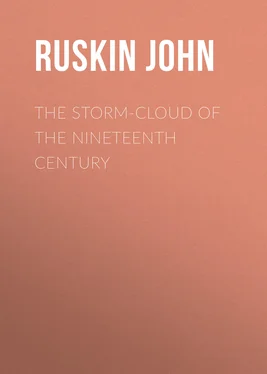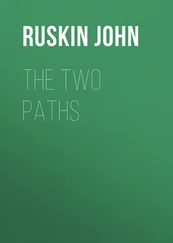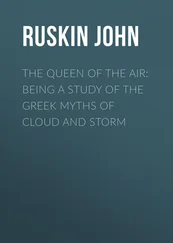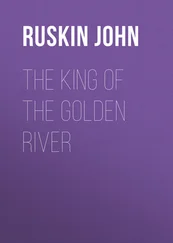John Ruskin - The Storm-Cloud of the Nineteenth Century
Здесь есть возможность читать онлайн «John Ruskin - The Storm-Cloud of the Nineteenth Century» — ознакомительный отрывок электронной книги совершенно бесплатно, а после прочтения отрывка купить полную версию. В некоторых случаях можно слушать аудио, скачать через торрент в формате fb2 и присутствует краткое содержание. Жанр: foreign_prose, literature_19, foreign_antique, на английском языке. Описание произведения, (предисловие) а так же отзывы посетителей доступны на портале библиотеки ЛибКат.
- Название:The Storm-Cloud of the Nineteenth Century
- Автор:
- Жанр:
- Год:неизвестен
- ISBN:нет данных
- Рейтинг книги:3 / 5. Голосов: 1
-
Избранное:Добавить в избранное
- Отзывы:
-
Ваша оценка:
- 60
- 1
- 2
- 3
- 4
- 5
The Storm-Cloud of the Nineteenth Century: краткое содержание, описание и аннотация
Предлагаем к чтению аннотацию, описание, краткое содержание или предисловие (зависит от того, что написал сам автор книги «The Storm-Cloud of the Nineteenth Century»). Если вы не нашли необходимую информацию о книге — напишите в комментариях, мы постараемся отыскать её.
The Storm-Cloud of the Nineteenth Century — читать онлайн ознакомительный отрывок
Ниже представлен текст книги, разбитый по страницам. Система сохранения места последней прочитанной страницы, позволяет с удобством читать онлайн бесплатно книгу «The Storm-Cloud of the Nineteenth Century», без необходимости каждый раз заново искать на чём Вы остановились. Поставьте закладку, и сможете в любой момент перейти на страницу, на которой закончили чтение.
Интервал:
Закладка:
2
These conditions are mainly in the arrangement of the lower rain-clouds in flakes thin and detached enough to be illuminated by early or late sunbeams: their textures are then more softly blended than those of the upper cirri, and have the qualities of painted, instead of burnished or inflamed, color.
They were thus described in the 4th chapter of the 7th part of 'Modern Painters':—
"Often in our English mornings, the rain-clouds in the dawn form soft level fields, which melt imperceptibly into the blue; or when of less extent, gather into apparent bars, crossing the sheets of broader cloud above; and all these bathed throughout in an unspeakable light of pure rose-color, and purple, and amber, and blue, not shining, but misty-soft, the barred masses, when seen nearer, found to be woven in tresses of cloud, like floss silk, looking as if each knot were a little swathe or sheaf of lighted rain.
"No clouds form such skies, none are so tender, various, inimitable; Turner himself never caught them. Correggio, putting out his whole strength, could have painted them,—no other man."
3
I did not, in writing this sentence, forget Mr. Gladstone's finely scholastic enthusiasm for Homer; nor Mr. Newton's for Athenian—(I wish it had not been also for Halicarnassian) sculpture. But Byron loved Greece herself—through her death—and to his own; while the subsequent refusal of England to give Greece one of our own princes for a king, has always been held by me the most ignoble, cowardly, and lamentable, of all our base commercial im policies.
4
'Deepening' clouds.—Byron never uses an epithet vainly,—he is the most accurate, and therefore the most powerful, of all modern describers. The deepening of the cloud is essentially necessary to the redness of the orb. Ordinary observers are continually unaware of this fact, and imagine that a red sun can be darker than the sky round it! Thus Mr. Gould, though a professed naturalist, and passing most of his life in the open air, over and over again, in his 'British Birds,' draws the setting sun dark on the sky!
5
'Like the blood he predicts.'—The astrological power of the planet Mars was of course ascribed to it in the same connection with its red color. The reader may be interested to see the notice, in 'Modern Painters,' of Turner's constant use of the same symbol; partly an expression of his own personal feeling, partly, the employment of a symbolic language known to all careful readers of solar and stellar tradition.
"He was very definitely in the habit of indicating the association of any subject with circumstances of death, especially the death of multitudes, by placing it under one of his most deeply crimsoned sunset skies.
"The color of blood is thus plainly taken for the leading tone in the storm-clouds above the 'Slave-ship.' It occurs with similar distinctness in the much earlier picture of 'Ulysses and Polypheme,' in that of 'Napoleon at St. Helena,' and, subdued by softer hues, in the 'Old Téméraire.'
"The sky of this Goldau is, in its scarlet and crimson, the deepest in tone of all that I know in Turner's drawings.
"Another feeling, traceable in several of his former works, is an acute sense of the contrast between the careless interests and idle pleasures of daily life, and the state of those whose time for labor, or knowledge, or delight, is passed forever. There is evidence of this feeling in the introduction of the boys at play in the churchyard of Kirkby Lonsdale, and the boy climbing for his kite among the thickets above the little mountain churchyard of Brignal-bank; it is in the same tone of thought that he has placed here the two figures fishing, leaning against these shattered flanks of rock,—the sepulchral stones of the great mountain Field of Death."
6
'Thy lore unto calamity.'—It is, I believe, recognized by all who have in any degree become interested in the traditions of Chaldean astrology, that its warnings were distinct,—its promises deceitful. Horace thus warns Leuconoe against reading the Babylonian numbers to learn the time of her death,—he does not imply their promise of previous happiness; and the continually deceptive character of the Delphic oracle itself, tempted always rather to fatal than to fortunate conduct, unless the inquirer were more than wise in his reading. Byron gathers into the bitter question all the sorrow of former superstition, while in the lines italicized, just above, he sums in the briefest and plainest English, all that we yet know, or may wisely think, about the Sun. It is the ' Burning oracle' (other oracles there are by sound, or feeling, but this by fire) of all that lives; the only means of our accurate knowledge of the things round us, and that affect our lives: it is the fountain of all life,—Byron does not say the origin ;—the origin of life would be the origin of the sun itself; but it is the visible source of vital energy, as the spring is of a stream, though the origin is the sea. "And symbol of Him who bestows it."—This the sun has always been, to every one who believes there is a bestower; and a symbol so perfect and beautiful that it may also be thought of as partly an apocalypse.
7
'More beautiful in that variety.'—This line, with the one italicized beneath, expresses in Myrrha's mind, the feeling which I said, in the outset, every thoughtful watcher of heaven necessarily had in those old days; whereas now, the variety is for the most part, only in modes of disagreeableness; and the vapor, instead of adding light to the unclouded sky, takes away the aspect and destroys the functions of sky altogether.
8
'Steam out of an engine funnel.'—Compare the sixth paragraph of Professor Tyndall's 'Forms of Water,' and the following seventh one, in which the phenomenon of transparent steam becoming opaque is thus explained. "Every bit of steam shrinks, when chilled, to a much more minute particle of water. The liquid particles thus produced form a kind of water dust of exceeding fineness, which floats in the air, and is called a cloud."
But the author does not tell us, in the first place, what is the shape or nature of a 'bit of steam,' nor, in the second place, how the contraction of the individual bits of steam is effected without any diminution of the whole mass of them, but on the contrary, during its steady expansion ; in the third place he assumes that the particles of water dust are solid, not vesicular, which is not yet ascertained; in the fourth place, he does not tell us how their number and size are related to the quantity of invisible moisture in the air; in the fifth place, he does not tell us how cool invisible moisture differs from hot invisible moisture; and in the sixth, he does not tell us why the cool visible moisture stays while the hot visible moisture melts away. So much for the present state of 'scientific' information, or at least communicativeness, on the first and simplest conditions of the problem before us!
In its wider range that problem embraces the total mystery of volatile power in substance; and of the visible states consequent on sudden—and presumably, therefore, imperfect—vaporization; as the smoke of frankincense, or the sacred fume of modern devotion which now fills the inhabited world, as that of the rose and violet its deserts. What,—it would be useful to know, is the actual bulk of an atom of orange perfume?—what of one of vaporized tobacco, or gunpowder?—and where do these artificial vapors fall back in beneficent rain? or through what areas of atmosphere exist, as invisible, though perhaps not innocuous, cloud?
Читать дальшеИнтервал:
Закладка:
Похожие книги на «The Storm-Cloud of the Nineteenth Century»
Представляем Вашему вниманию похожие книги на «The Storm-Cloud of the Nineteenth Century» списком для выбора. Мы отобрали схожую по названию и смыслу литературу в надежде предоставить читателям больше вариантов отыскать новые, интересные, ещё непрочитанные произведения.
Обсуждение, отзывы о книге «The Storm-Cloud of the Nineteenth Century» и просто собственные мнения читателей. Оставьте ваши комментарии, напишите, что Вы думаете о произведении, его смысле или главных героях. Укажите что конкретно понравилось, а что нет, и почему Вы так считаете.












